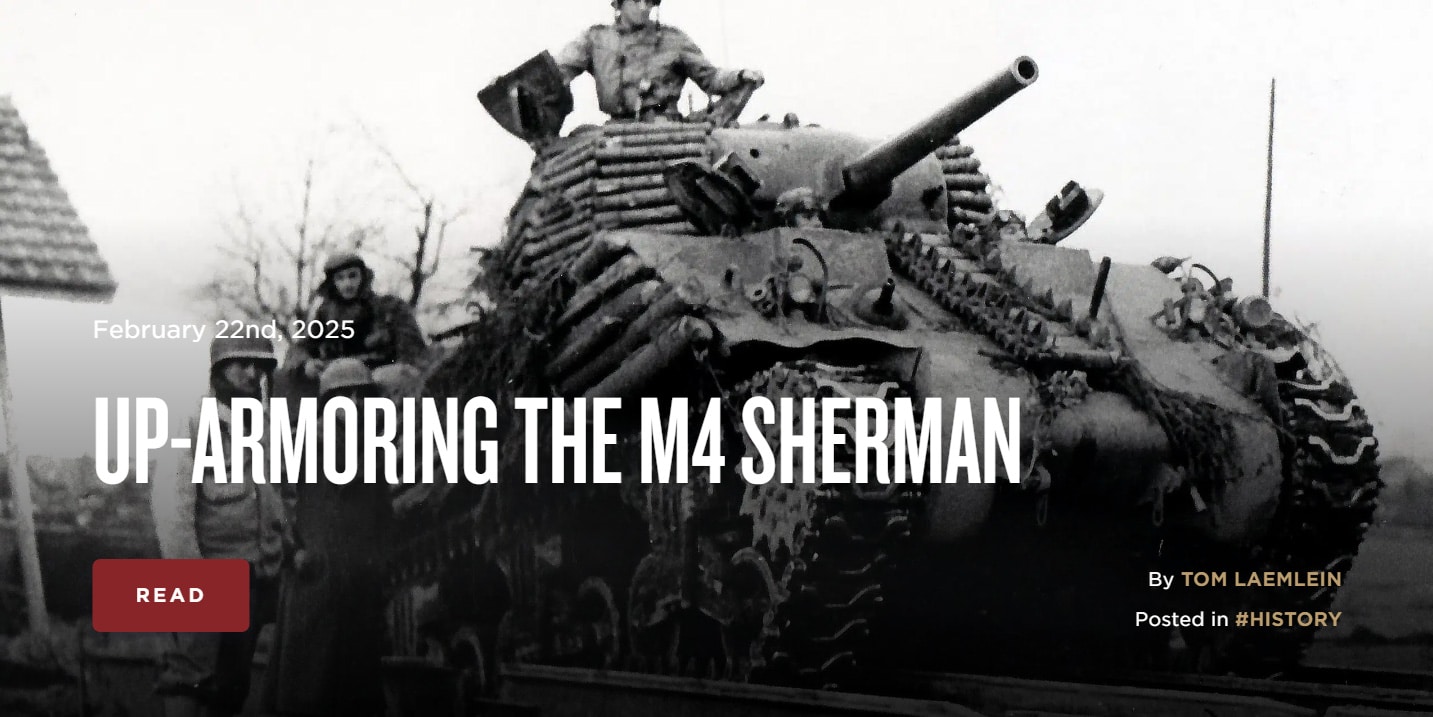Hello all, here is today's article posted on TheArmoryLife.com. It is titled “Up-Armoring the M4 Sherman” and can be found at https://www.thearmorylife.com/up-armoring-the-m4-sherman/.



Fires were largely due to ammo cooking off, not fuel. Contrary to the movies German tanks were petrol also, not diesel. The King Tiger encounter you mention is, I suspect, fairly late in the war when later model Shermans had wet ammo storage which cut down on fires significantly. During the war, both sides, if offered the tactical opportunity, would fire multiple times at a knocked out tank to start a fire because burned up tanks cannot be repaired and returned to the battlefield.I have a book around here somewhere with pictures of a knocked out trio of Sherman's that lost a fight with a King Tiger. All three took through and through hits head on in their final drive assembly, passed through the interior under the fighting compartment floor, through the firewall, the engine, and out the rear bulkhead.
Surprisingly, none of them burned
